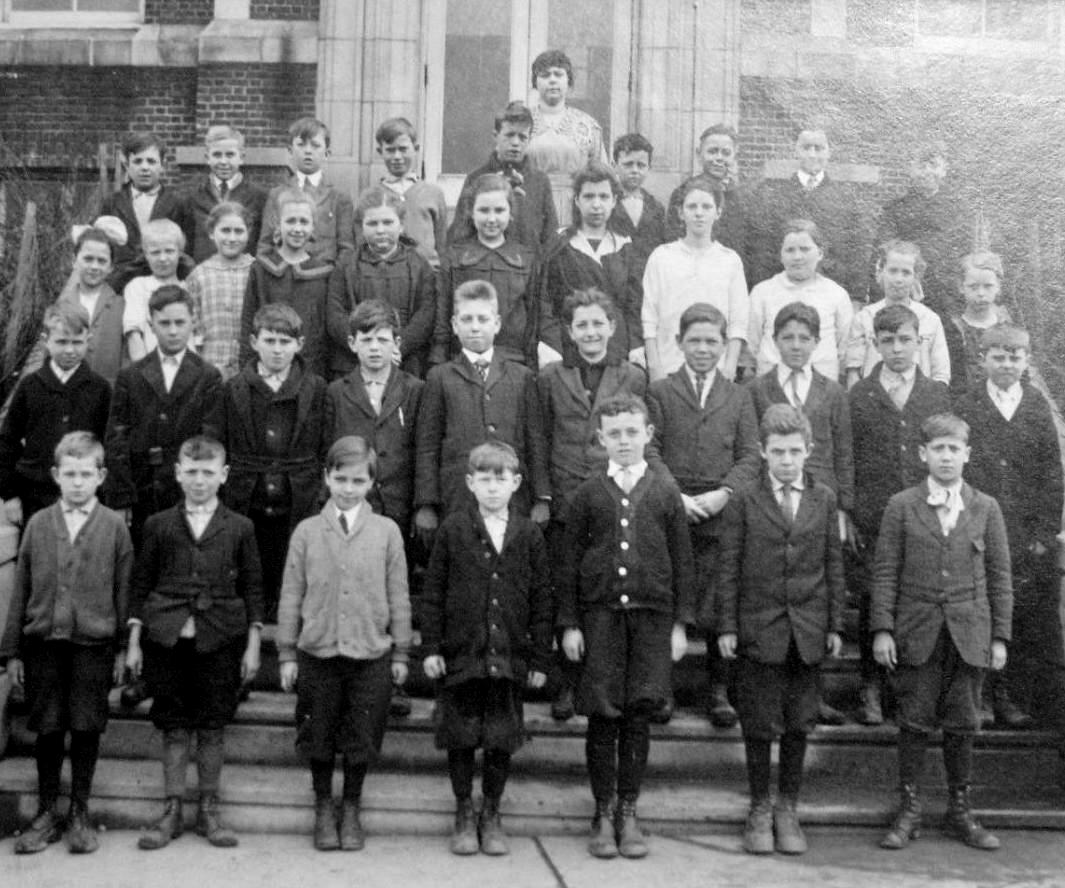
School Jumpers/Sweaters: Chronology--The 20th Century

Figure 1.--There is no information on this American cabinet card. We see 37 children, both boys and girls, with their lady teacher at the back. Notice that the boys are not all wearing suits, many are wearing sweaters instead of suit jackets. We see roll collar and cardigan sweaters. The portrait is not dated, but looks like the 90 to us. The early-20s is possible. We would guess that the childre are 2nd graders (7-year olds). Photograph: 7" wide x 5" high. Cardboard Matte: 10" wide x 7 7/8" high.
|
|
We have much more detailed information on school sweaters for the 20th century. The sweater situation changes dramatically after the turn of the century, especially by the 1910s. School poertaits at first continue io show few sweaters (1900s). The next decade was very different (1910s). The first time we see large numbers of children, at first mostly boys, wearing sweaters is the 1910s, although we are just beginning our assessment.
The sweater was widely worn to school throughout the 20th century beginning in the 1910s. This is especially after World War I when school wear began to become more casual. Much of our information comes from America and it is the 1910s that we first see large numbers of sweaters at school. We think this pattern was basically the same in other countries, but this needs to be confirmed. We believe the sweater was primarily a school garment that became popular in the early-20th century. Styles varied by decade as sweaters increased in popularity and new styles appeared. There were substantil variations from country to country. We see sweaters with rolled collars in American schools in the 1910s. This seems a destinctively American style. V-neck sweaters worn with ties seem especially popular in Britain by the 1920s. Here different styles were popular and this was not a matter of varying time lines. Here we see anb Ebglish sweater ith a partial zipper front, worn rather like a V-front (1935). V-frints were a popular school sweater style in England. We have just begun to build a time-line of sweater trends. We have detailed informstion on America and Germany, but are just beginning to develop information on other countries. After World War II by the 1970s we see sweaters becomong a part of the pan-European fashion trends, although climatic variation did provide some diversity. We also see a trend toward synthetic fibers after WWorld War II because of the high cost cost of wool sweaters.
HBC-SU

Navigate the HBC School Section:
[Return to the Main school uniform sweater chronology page]
[Return to the Main school uniform sweater page]
[About Us]
[Activities]
[Chronology]
[Clothing styles]
[Countries]
[Debate]
[Economics]
[Garment]
[Gender]
[Hair]
[History]
[Home trends]
[Literary characters]
[School types]
[Significance]
[Transport and travel
[Uniform regulations]
[Year level]
[Other topics]
[Images]
[Links]
[Registration]
[Tools]
[Return to the Historic Boys' School Home]
Created: 11:04 PM 9/24/2018
Last updated: 11:04 PM 9/24/2018




